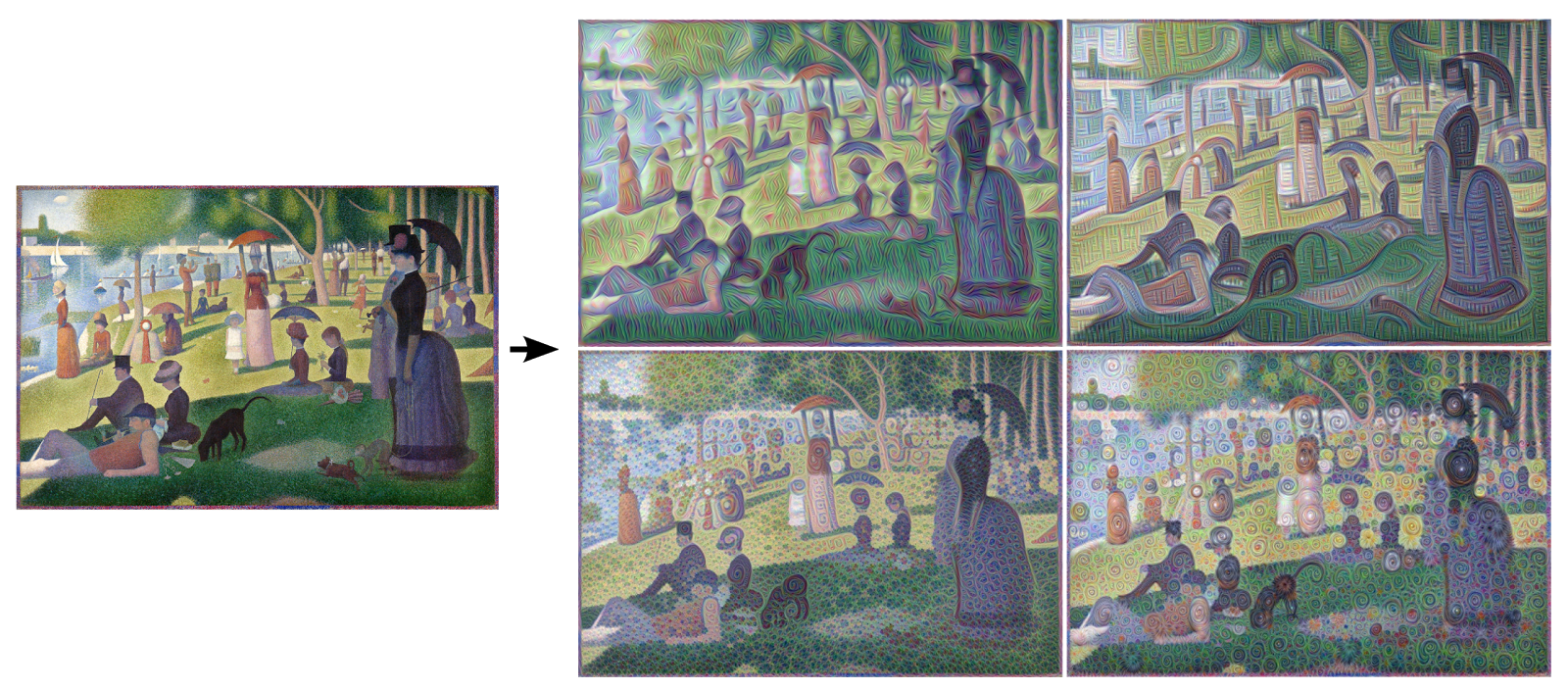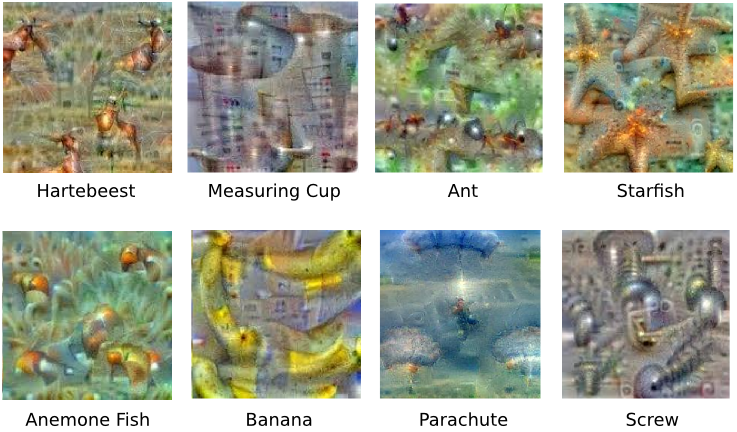Jerome Marot
Well-known member
A fascinating article about neural networks. Neural Networks are used in image recognition. The idea is, basically, to build a system mimicking human vision and to let the machine train itself to recognise objects. But because we let the machine train itself, the resulting model is not something that can be described with a simple rule set, and scientists have difficulties grasping how the resulting model works.
The article presents what happens when we tried to tweak the image so that the recognising process becomes more visible. For example, here, the low level networks which are used to recognise lines and shapes:

A different example where the higher level networks are extracted. Here we see what the networks considers to be the "essence" of various subjects:

As humans we are gifted with the ability to process images into something we understand, but also to immediately decide whether an image is something we like to watch because we find it aesthetic or whether it is poor, disharmonious or unbalanced, but we don't know why. In essence, we are gifted with the capacity to "read" pictures, be we don't know how we do it. This kind of research allows you to get glimpses into these processes, to read the reading.
The article presents what happens when we tried to tweak the image so that the recognising process becomes more visible. For example, here, the low level networks which are used to recognise lines and shapes:

A different example where the higher level networks are extracted. Here we see what the networks considers to be the "essence" of various subjects:

As humans we are gifted with the ability to process images into something we understand, but also to immediately decide whether an image is something we like to watch because we find it aesthetic or whether it is poor, disharmonious or unbalanced, but we don't know why. In essence, we are gifted with the capacity to "read" pictures, be we don't know how we do it. This kind of research allows you to get glimpses into these processes, to read the reading.
